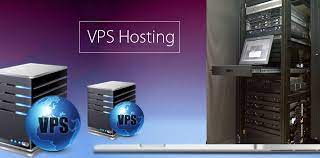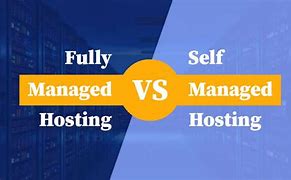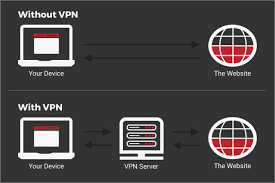What is VPS Hosting?

VPS stands for Virtual Private Server. It is a virtualized server that mimics a dedicated server within a larger physical server. In a VPS hosting environment, a single physical server is divided into multiple virtual servers, each of which operates independently with its own operating system (OS), resources, and configurations.
Table of Contents
Difference between Fully Managed and Self-Managed VPS Hosting
The main differences between Fully Managed and Self-Managed VPS Hosting lie in the level of control, responsibility, and support provided by the hosting provider. Here’s a more detailed comparison:

Fully Managed VPS Hosting
- Server Management:
- Provider Responsibility: The hosting provider takes care of all server management tasks, including setup, maintenance, updates, and security.
- User Involvement: Users have minimal involvement in server management tasks, allowing them to focus on their websites or applications.
- Technical Support:
- Provider Support: The hosting provider offers comprehensive technical support. Users can contact the support team for assistance with any server-related issues.
- User Responsibility: Users rely on the hosting provider’s support for most technical matters.
- Updates and Maintenance:
- Provider Handling: The hosting provider ensures that the server software and security measures are regularly updated and maintained.
- User Involvement: Users typically do not need to worry about performing server updates or maintenance tasks.
- Security:
- Provider Responsibility: The hosting provider is responsible for implementing and maintaining security measures on the server.
- User Involvement: Users may not need to actively manage security settings, as it is handled by the hosting provider.
Self-Managed VPS Hosting

- Server Management:
- User Responsibility: Users have full control over server management tasks, including installation, configuration, updates, and security measures.
- Provider Involvement: The hosting provider provides the basic infrastructure but does not actively manage the server on behalf of the user.
- Technical Support:
- Limited Support: The hosting provider may offer basic support for issues related to hardware or network problems but does not assist with server-specific configurations or software-related matters.
- User Responsibility: Users are expected to have the technical expertise to troubleshoot and resolve server issues independently.
- Updates and Maintenance:
- User Handling: Users are responsible for installing software updates, managing server configurations, and performing routine maintenance tasks.
- Provider Involvement: The hosting provider may not actively handle updates or maintenance on the user’s behalf.
- Security:
- User Responsibility: Users must actively implement and manage security measures, including firewalls, antivirus software, and other security configurations.
- Provider Involvement: The hosting provider may offer basic network-level security but leaves the implementation of specific security measures to the user.
Fully Managed and Self-Managed VPS Hosting Considerations for Choosing:
- Technical Expertise: Fully Managed is suitable for users with limited technical skills, while Self-Managed is ideal for those with advanced technical expertise.
- Time Commitment: Fully Managed allows users to focus on their projects without worrying about server management, while Self-Managed requires more time for ongoing maintenance.
- Support Needs: If you require extensive technical support, Fully Managed is a better choice. If you prefer independence and control, Self-Managed may be more suitable.
Ultimately, the choice between Fully Managed and Self-Managed VPS Hosting depends on individual preferences, technical skills, and specific hosting requirements.
How do VPSs work?

Virtual Private Servers (VPS) operate through virtualization technology, which enables the creation of isolated virtual environments within a single physical server. The process involves a hypervisor or virtualization software running on the host server, dividing it into multiple Virtual Machines (VMs) or containers. Each VM or container acts as an independent server with its own virtualized hardware resources, including CPU, RAM, storage, and network interfaces. These virtual servers run their own operating systems, allowing users to choose and customize their preferred OS. The virtualization technology ensures strong isolation between VPS instances, meaning activities on one VPS do not impact others. Users can manage their VPS through a control panel, where they have the flexibility to install applications, configure settings, and monitor performance. This approach provides a cost-effective solution for users needing more control and resources than shared hosting but without the cost of a dedicated server. Additionally, VPS hosting allows for scalability, enabling users to easily upgrade resources as their requirements grow.
Conclusion of Fully Managed and Self-Managed VPS Hosting
In conclusion, the choice between Fully Managed and Self-Managed VPS Hosting hinges on individual preferences and requirements. Fully Managed VPS Hosting is ideal for those seeking a seamless, hands-off experience, with comprehensive technical support, time-saving features, and robust security measures provided by the hosting service. It’s well-suited for users who prioritize simplicity and want the hosting provider to handle the intricacies of server management. On the other hand, Self-Managed VPS Hosting appeals to users with advanced technical skills who value full control and customization. This option allows for cost-effectiveness, technical flexibility, and valuable learning opportunities for those looking to actively manage and tailor their server environment. The decision ultimately rests on the balance between desired autonomy, technical proficiency, and the level of support required, ensuring that the chosen hosting solution aligns with individual goals and preferences.
